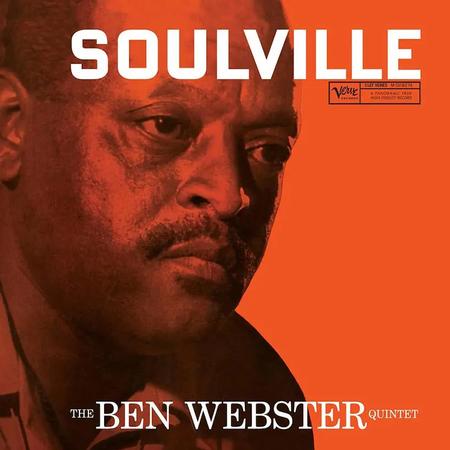Acoustic Sounds/Verve Series Reissues Perennial Ben Webster "Cognac" Fave
cut by Ryan Smith at Sterling Sound
The "Ben Webster Quintet" was really Webster plus the Oscar Peterson Trio of Peterson, Herb Ellis and Ray Brown—a grouping Peterson once said was "the most stimulating"—plus Stan Levey on drums. It was a busy time for the Peterson Trio, which had played the previous day with Louis Armstrong in a session that probably resulted in Louis Armstrong Meets Oscar Peterson, though for some reason that wasn't released until 1959. The next day the trio went into the studio (probably Capitol) with Coleman Hawkins for The Genius of Coleman Hawkins and later the same day they reunited with Webster for Coleman Hawkins Encounters Ben Webster. All classic albums.
This frenzy of actually occurred when Webster was pushing fifty and a new generation of musicians playing a newer sound was in some ways pushing aside the older generation, but Webster's sound was so big, so juicy and so pleasing, his continuing relevance could not be denied, aided by the advent of high fidelity recordings that brought his rich, lush sound into the listening rooms of the new generation of "audio enthusiasts".
When Webster makes his entrance on the opening self-penned title tune after Peterson—almost in the background—and Brown lead it off, the full, rich, breathy sax sound overwhelms the between the speakers space. This album makes the case for mono as well as any album I can think of.
"Late Date", another Webster original, follows and from there the quintet digs into five standards all taken at a leisurely pace that offer no challenges to even a jazz novice but deliver highly enjoyable bluesy pleasures. Some of Webster's off the charts lines are comedic in their intensity.
Other than occasional overmodulation distortion on Ellis's guitar on "Late Date", the sound matches Webster's tone (I confirmed that it's on the record by playing it on three different properly set-up turntables).
Pour a glass, take a sip, relax, and relish a high fidelity time capsule glimpse into a much simpler era when much of the jazz scene was a stress reliever not a provocateur. And while you're at it, enjoy the laminated "Tip on" gatefold jacket and the two inner gatefold Burt Goldblatt Webster photos.
Analogue Productions release this on a double 45rpm reissue eleven years ago (seems like yesterday) and its somewhat mellower sound works well with the material. The new 33 1/3 offers greater transient detail and image relief and you can remain seated. Unless getting up is now an issue, if you have the double 45 you're set.












































.png)








